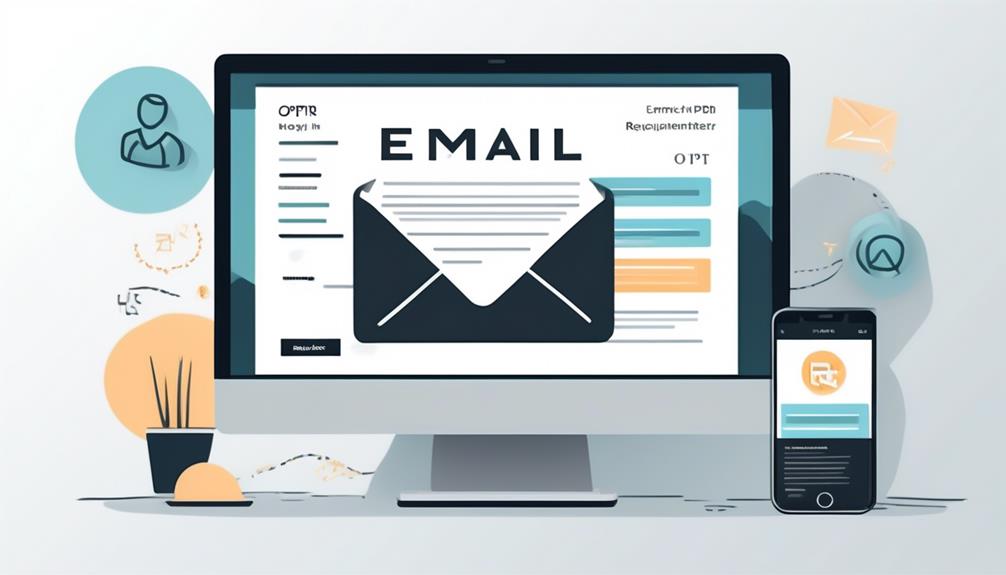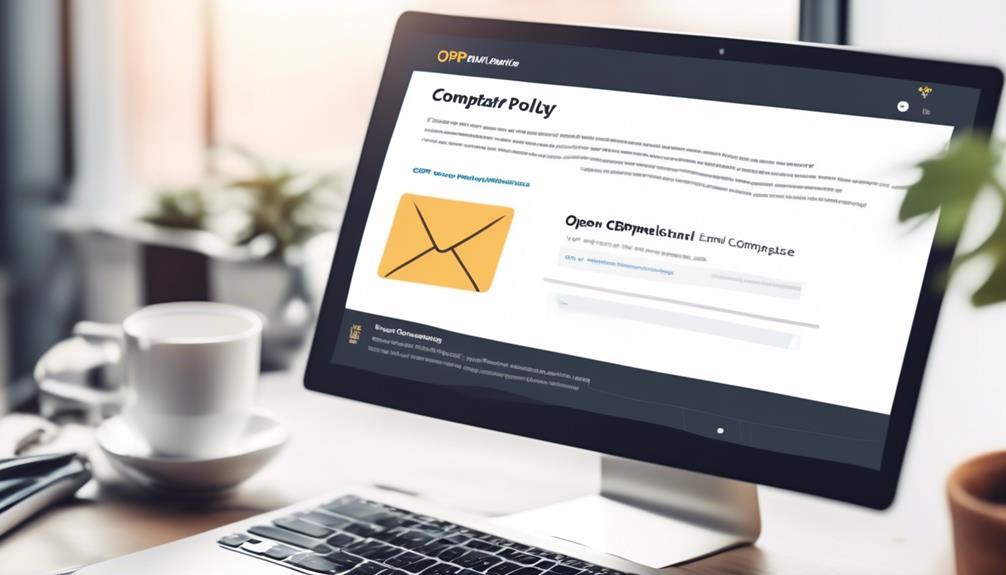As marketers, our aim is to interact with our audience in the most effective and legal way possible. However, the General Data Protection Regulation (GDPR) has made managing email marketing campaigns a more complex challenge.
Ensuring that our email marketing practices align with GDPR guidelines is not only a legal necessity but also vital for maintaining trust with our audience and avoiding potential penalties.
In this discussion, we'll explore nine best practices for GDPR-compliant email campaigns, each essential for safeguarding our marketing efforts and respecting the privacy of our subscribers.
Key Takeaways
- Obtain explicit consent for receiving marketing emails and separate it from agreeing to terms and conditions.
- Provide simplified options for individuals to withdraw consent and opt-out of marketing emails.
- Avoid bundling consent for marketing with other terms or conditions.
- Regularly remind individuals of their right to withdraw consent and promptly implement consent withdrawal requests.
Explicit Opt-In Consent
When implementing GDPR-compliant email campaigns, we actively seek explicit opt-in consent from individuals for receiving marketing emails. This means individuals must actively confirm their consent, separate from terms and conditions, by actively selecting the checkbox themselves. The opt-in checkbox can't be pre-selected or pre-ticked, and the consent must specifically relate to the purpose of sending marketing communications.
It's crucial for organizations to ensure clear and distinct consent when collecting personal data for email marketing. This involves providing simplified consent withdrawal and opt-out options in every marketing email.
By adhering to these best practices, we prioritize data protection and compliance with GDPR regulations. Our consent management process focuses on obtaining explicit consent, ensuring that individuals have full control over the processing of their personal data for marketing purposes.
We understand that explicit opt-in consent is fundamental to building trust with our audience and demonstrating our commitment to responsible and transparent email marketing practices.
Separate Consent and Terms
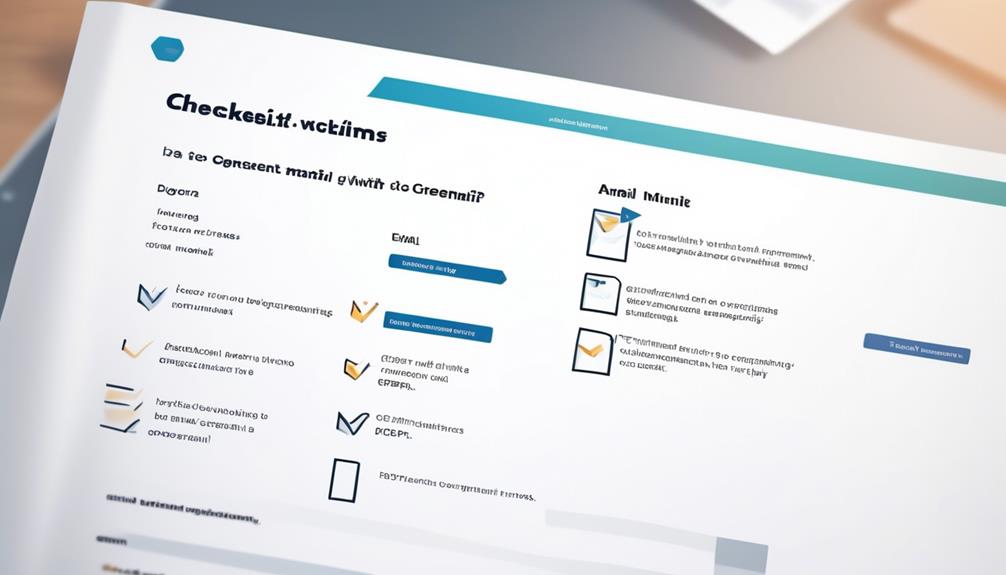
We need to ensure that our consent process is clear and our terms are transparent to comply with GDPR regulations.
By separating consent for email marketing from agreeing to terms and conditions, we can avoid any confusion and provide individuals with a distinct choice.
This helps to ensure that consent for marketing purposes is freely given and specific to the individual's preferences.
Clear Consent Process
Implementing a separate and distinct consent process for email marketing is essential to clearly distinguish consent from terms and conditions and comply with GDPR requirements. This approach ensures that individuals provide clear affirmative consent specifically for receiving marketing emails, separate from agreeing to other terms.
By implementing a clear consent process, businesses can demonstrate valid consent for data processing, respecting individuals' privacy rights and ensuring GDPR compliance. It's crucial to provide an easy and accessible unsubscribe link in every marketing email, allowing recipients to withdraw their consent effortlessly.
This not only respects individuals' preferences but also aligns with GDPR requirements for transparent and easily revocable consent. Thus, a clear consent process is fundamental in building and maintaining GDPR-compliant email marketing campaigns.
Transparent Terms Disclosure
After establishing a clear consent process for email marketing, the next crucial step is to ensure transparent terms disclosure by separating consent for email marketing from other terms and conditions. When addressing transparent terms disclosure in GDPR-compliant email campaigns, it's essential to:
- Clearly obtain separate consent for email marketing from individuals.
- Avoid bundling consent for email marketing with other terms or conditions.
- Ensure the process of obtaining consent for email marketing is transparent and distinct.
Simplify Consent Withdrawal
To simplify consent withdrawal for email marketing, offer a user-friendly and readily accessible method for individuals to opt out of receiving marketing emails.
It's imperative to provide clear and easy-to-follow instructions for individuals to withdraw their consent. This process shouldn't necessitate excessive effort or time.
In compliance with GDPR, individuals have the right to withdraw consent for the processing of their personal data, including for marketing emails. Therefore, it's essential to ensure that the unsubscribe process is straightforward and doesn't create unnecessary barriers for the data subject.
Regularly reminding individuals of their right to withdraw consent in every marketing communication can also help to facilitate this process.
Moreover, promptly acknowledging and implementing individuals' withdrawal of consent is crucial to respecting their data subject rights and maintaining GDPR compliance.
Soft Opt-In Exception
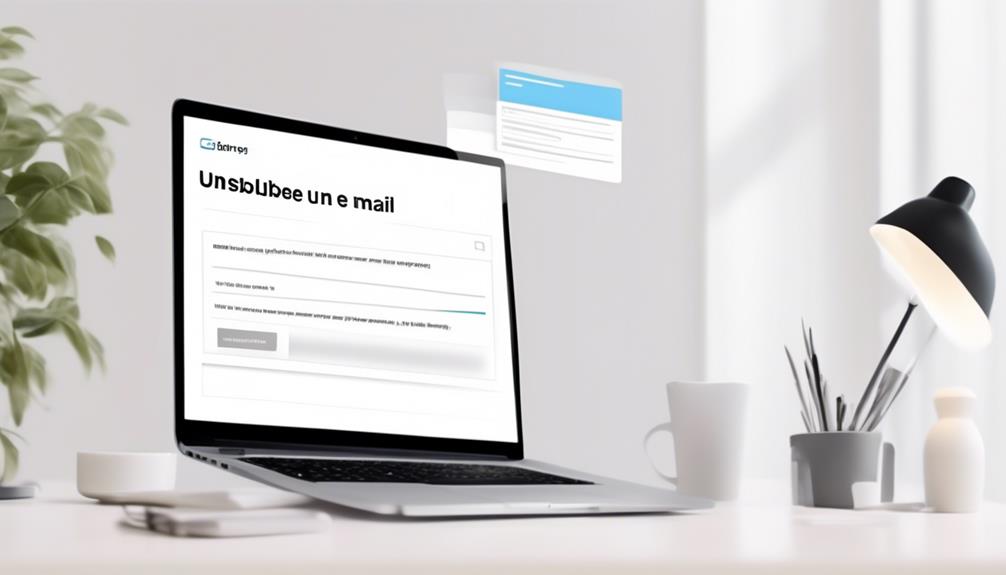
How does the 'soft opt-in' exception under GDPR impact organizations' marketing emails to existing customers?
The 'soft opt-in' exception, when utilized in compliance with GDPR requirements, allows organizations to send marketing emails to existing customers. This exception is applicable if the customer's contact details were obtained during the sale of a product or service and they were given the opportunity to opt-out at that time.
However, there are important considerations and limitations to be aware of:
- The exception applies to similar products or services and requires providing the opportunity to opt-out with every subsequent communication.
- It doesn't extend to third-party marketing or if the customer has opted out.
- Organizations must ensure that they've a clear understanding of the 'soft opt-in' exception's obligations under GDPR, particularly concerning consent and opt-out options.
When incorporating the 'soft opt-in' exception into email campaigns, it's crucial for organizations to adhere to data protection regulations and best practices for compliant marketing emails. Understanding the nuances of this exception is essential for maintaining compliance with GDPR while engaging in effective and lawful email marketing practices.
Validity of Purchased Marketing Lists
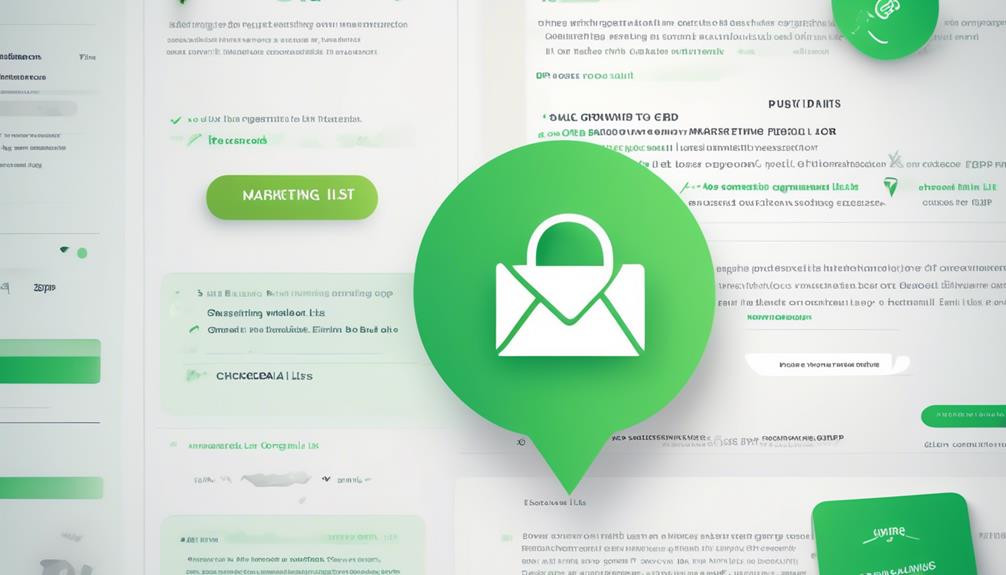
Transitioning from the 'soft opt-in' exception, the validity of purchased marketing lists in compliance with GDPR is a critical aspect for organizations engaging in email marketing campaigns.
Under GDPR, using purchased marketing lists from third parties is generally prohibited unless organizations can demonstrate valid consent from individuals. Due diligence is crucial to ensure that the individuals in the purchased lists have given explicit consent for their personal data to be used for marketing purposes.
It's essential for organizations to inform individuals about the identity of the organization and the source of their information when using purchased marketing lists. Additionally, organizations must provide a clear and easy option to opt-out of receiving further marketing emails.
It's important to note that organizations shouldn't rely on purchased lists if there's uncertainty about the validity of consent under GDPR. Compliance with these regulations is imperative to ensure that email marketing campaigns are GDPR compliant and that individuals' data protection rights are respected.
Compliance With Other Regulations
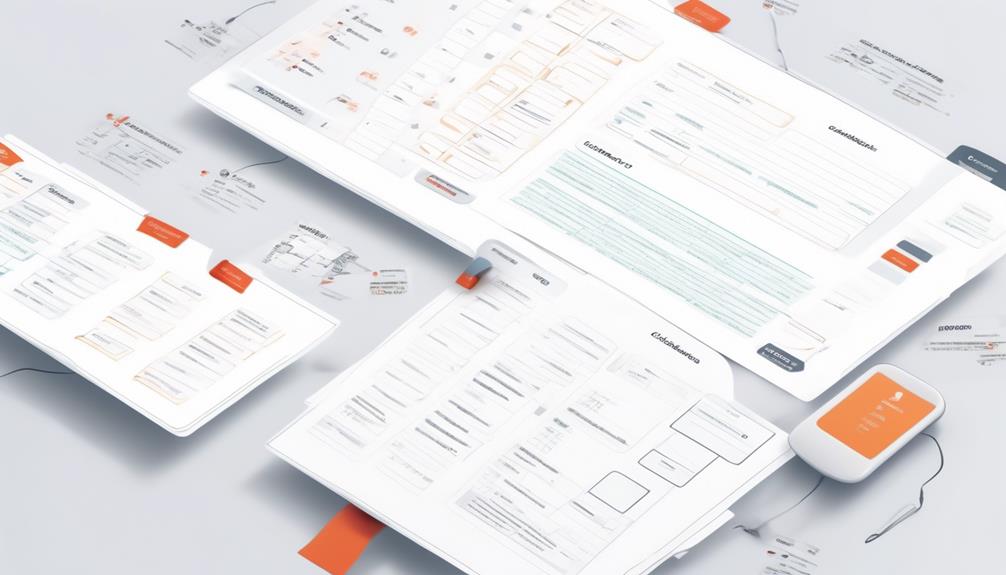
Understanding the impact of various regulations on email marketing campaigns is crucial for ensuring compliance and avoiding potential legal consequences. When it comes to compliance with other regulations in addition to GDPR, organizations must consider several key factors:
- Consent Requirements: Ensure compliance with the GDPR and e-Privacy Directive by understanding the consent requirements for sending marketing emails. It's essential to have a clear legal basis for processing personal data for marketing purposes and to obtain valid consent from individuals.
- Data Subject Rights: Be aware of potential fines and legal consequences for failing to adhere to data subject requests and marketing requirements. Organizations must respect individuals' rights to access, rectify, and erase their personal data.
- Other Regulatory Frameworks: Comply with regulations such as the US CAN-SPAM Act, which mandates honoring opt-out requests promptly. Avoid relying on purchased marketing lists unless there's certainty of individual consent and provision of opt-out options.
Staying updated on changes and developments regarding other regulations, such as the upcoming ePrivacy Regulation, is crucial to maintain compliance with multiple legal frameworks. By understanding and adhering to these regulations, organizations can ensure their email marketing campaigns are conducted in a compliant manner, respecting data protection and individuals' rights.
Reliable Email Service Provider

Choosing a reliable email service provider is crucial for ensuring data security and compliance with GDPR regulations in email marketing campaigns. GDPR compliance requires careful handling of personal data, and a reliable email service provider plays a significant role in this process.
These providers prioritize data security and offer features to obtain and manage user consent for marketing emails. They also have built-in mechanisms for opt-in and opt-out processes, ensuring compliance with GDPR's consent requirements.
Additionally, reliable email service providers provide encryption and data protection measures to secure personal data in email communications, addressing the data protection aspect of GDPR. Their support and tools for managing email databases also align with GDPR requirements, making it easier for businesses to comply with the regulation.
Double Opt-In Process
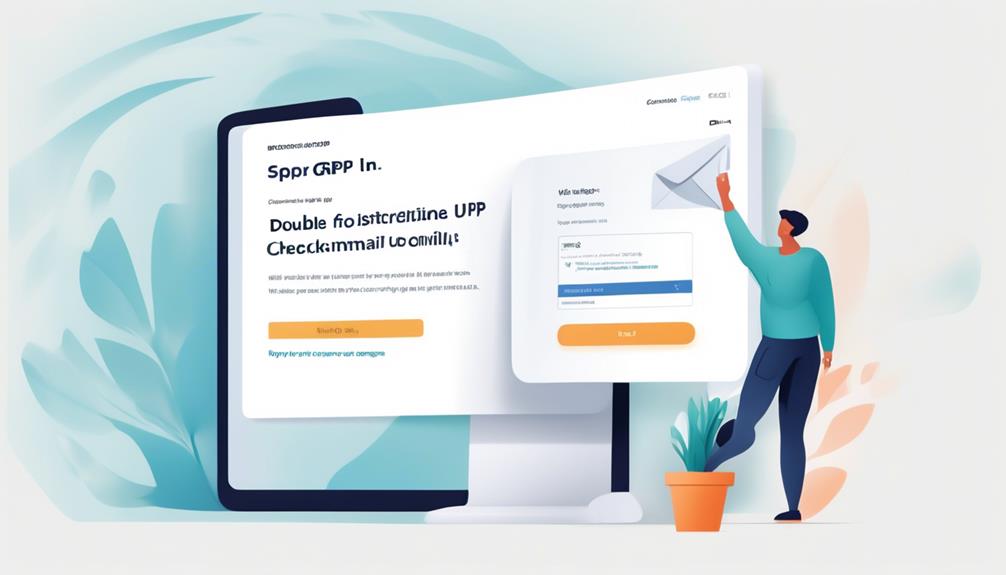
When it comes to email marketing, the double opt-in process is a crucial step in ensuring user consent and data protection.
By requiring individuals to confirm their subscription, this method adds an extra layer of verification and helps maintain the accuracy of your contact list.
Implementing a double opt-in process not only aligns with GDPR guidelines but also enhances the quality of your email list and engagement rates.
Opt-In Confirmation
Implementing a Double Opt-In Process in email marketing ensures that individuals actively confirm their consent to receive marketing emails, enhancing subscriber base quality and strengthening GDPR compliance.
This process involves the initial opt-in, followed by a confirmation email containing a validation link or code. The Double Opt-In method validates email accuracy and ensures genuine interest, enhancing subscriber base quality. It also provides documented evidence of explicit consent, reducing the risk of non-compliance.
Furthermore, Double Opt-In demonstrates a commitment to respecting subscribers' preferences and building trust. By requiring individuals to confirm their subscription through a secondary verification step, organizations can ensure compliance with GDPR regulations, protecting personal data and respecting the legitimate interest of data subjects.
User Consent
After confirming their subscription through a validation link or code in the Double Opt-In process, users actively express their explicit consent to receive marketing emails, aligning with GDPR compliance and enhancing the quality of the subscriber base.
The Double Opt-In process, requiring users to confirm their subscription twice, ensures that their consent is intentional and explicit. This process typically involves users signing up via a form and then confirming their subscription through a confirmation email, providing an added layer of consent.
Implementing a double opt-in process can demonstrate a higher level of compliance with GDPR consent requirements and help in obtaining consent for the use of personal data in email marketing campaigns.
Ultimately, this practice contributes to data protection and helps build a more engaged and committed subscriber base, enhancing the effectiveness of email campaigns.
Data Protection
Utilizing a double opt-in process is an effective method to ensure subscribers' explicit consent for receiving marketing emails, thereby bolstering data protection measures in compliance with GDPR requirements.
When implementing a double opt-in process, organizations should consider the following:
- Clear Consent: The double opt-in method ensures clear and unambiguous consent from subscribers, aligning with GDPR's requirements for obtaining valid consent for email marketing.
- Record of Consent: This process helps establish a clear record of consent, strengthening compliance with GDPR's consent requirements and demonstrating commitment to data protection best practices.
- Building Trust: Adhering to a double opt-in process for obtaining consent can help organizations build trust with subscribers and showcase a dedication to data protection and compliance with privacy policies.
Record-Keeping for Processing Activities

We meticulously maintain detailed records of all processing activities related to email marketing to demonstrate our compliance with GDPR requirements. This includes documenting the lawful basis for processing personal data, such as consent or other legal bases, and keeping records of consent received. We also maintain records of opt-in methods, proof of consent obtained, and opt-out options provided, including details of consent for email marketing from legacy contacts. Clear and distinct consent for the collection of personal data is essential, and we keep records of how and when consent was obtained. Additionally, we remind individuals of their right to opt-out in every marketing communication and maintain records of opt-out requests and the actions taken. Our commitment to record-keeping ensures transparency, accountability, and compliance with GDPR regulations.
—
| Record-Keeping for Processing Activities | ||
|---|---|---|
| Document lawful basis for processing personal data | Keep records of consent received | Maintain records of opt-in methods used |
| Maintain proof of consent obtained | Record details of consent for email marketing from legacy contacts | Remind individuals of their right to opt-out in every marketing communication |
Frequently Asked Questions
What Practice Should an Email Campaign Follow to Comply With Gdpr?
We ensure GDPR compliance by:
- Obtaining clear consent for marketing emails, separate from terms and conditions, with an explicit opt-in process.
- Providing a simple, free opt-out in every email and respecting unsubscribes.
- Prohibiting the purchasing or scraping of lists; we ensure clear consent and opt-out options for purchased lists.
Regularly reviewing databases, providing clear opt-out options, and compliance with GDPR principles are crucial to avoid legal consequences and respect privacy.
How Do I Make My Email GDPR Compliant?
To make our email GDPR compliant, we take several measures:
- We obtain explicit consent for marketing.
- We implement clear opt-in and opt-out methods.
- We regularly update our databases.
In addition, we have strict policies in place:
- We refrain from purchasing or scraping email lists without proper consent.
To ensure full compliance and risk mitigation, it is crucial to seek legal advice. This will help tailor our approach to our specific circumstances.
What Is the Best Email Service for GDPR Compliance?
We found that the best email service for GDPR compliance is one that prioritizes consent management and provides clear opt-in and opt-out processes.
It should offer features for capturing and documenting consent in accordance with GDPR requirements. Additionally, it should support the management of legacy contacts' consent and facilitate the inclusion of opt-out reminders in marketing communications.
Such a provider ensures compliance with GDPR while maintaining effective email campaign management.
Does GDPR Apply to Email Marketing?
Yes, GDPR applies to email marketing. It requires obtaining consent for email marketing and processing personal data for direct marketing.
Opt-in method, proof of consent, opt-out option, and consent for email marketing from legacy contacts are necessary for compliance.
Personal data must be collected with clear consent, and individuals must be reminded of their ability to opt-out in every marketing communication.
What Are the Key Best Practices for GDPR-Compliant Email Campaigns?
When launching email campaigns, there are several essential tips GDPR compliant emails to keep in mind. Obtain clear consent from recipients, clearly outline their rights, and offer an easy way to opt out. Regularly update your database and regularly monitor compliance to ensure that your campaigns are GDPR-compliant.
Conclusion
In conclusion, implementing these best practices for GDPR-compliant email campaigns is essential for maintaining trust and avoiding costly penalties.
But there's one more crucial factor to consider that can make or break your compliance efforts.
Stay tuned for our next article where we reveal the key to ensuring ongoing GDPR compliance and building strong customer relationships.
Don't miss out on this game-changing insight!
